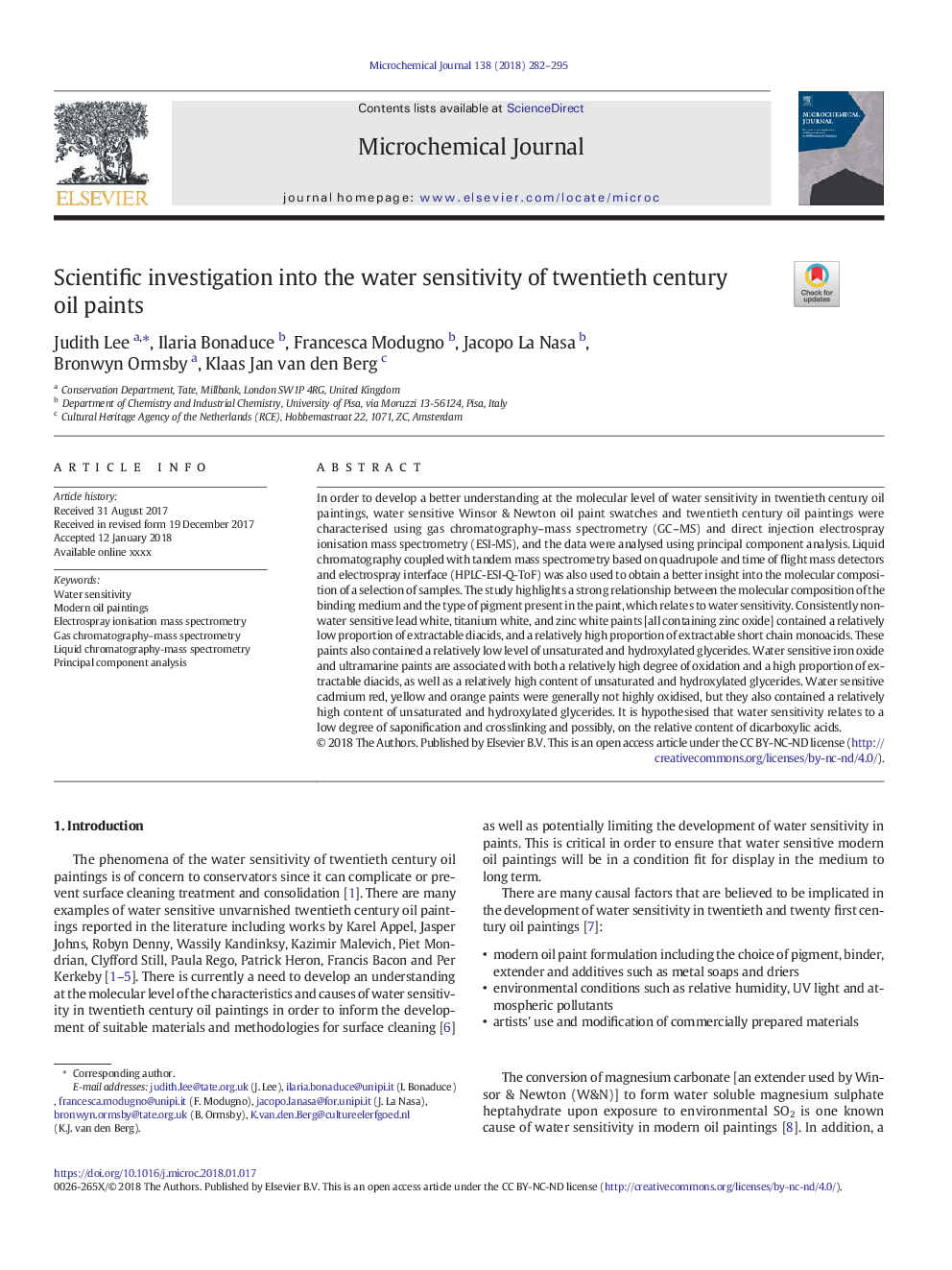| Article ID | Journal | Published Year | Pages | File Type |
|---|---|---|---|---|
| 7640978 | Microchemical Journal | 2018 | 14 Pages |
Abstract
In order to develop a better understanding at the molecular level of water sensitivity in twentieth century oil paintings, water sensitive Winsor & Newton oil paint swatches and twentieth century oil paintings were characterised using gas chromatography-mass spectrometry (GC-MS) and direct injection electrospray ionisation mass spectrometry (ESI-MS), and the data were analysed using principal component analysis. Liquid chromatography coupled with tandem mass spectrometry based on quadrupole and time of flight mass detectors and electrospray interface (HPLC-ESI-Q-ToF) was also used to obtain a better insight into the molecular composition of a selection of samples. The study highlights a strong relationship between the molecular composition of the binding medium and the type of pigment present in the paint, which relates to water sensitivity. Consistently non-water sensitive lead white, titanium white, and zinc white paints [all containing zinc oxide] contained a relatively low proportion of extractable diacids, and a relatively high proportion of extractable short chain monoacids. These paints also contained a relatively low level of unsaturated and hydroxylated glycerides. Water sensitive iron oxide and ultramarine paints are associated with both a relatively high degree of oxidation and a high proportion of extractable diacids, as well as a relatively high content of unsaturated and hydroxylated glycerides. Water sensitive cadmium red, yellow and orange paints were generally not highly oxidised, but they also contained a relatively high content of unsaturated and hydroxylated glycerides. It is hypothesised that water sensitivity relates to a low degree of saponification and crosslinking and possibly, on the relative content of dicarboxylic acids.
Keywords
Related Topics
Physical Sciences and Engineering
Chemistry
Analytical Chemistry
Authors
Judith Lee, Ilaria Bonaduce, Francesca Modugno, Jacopo La Nasa, Bronwyn Ormsby, Klaas Jan van den Berg,
